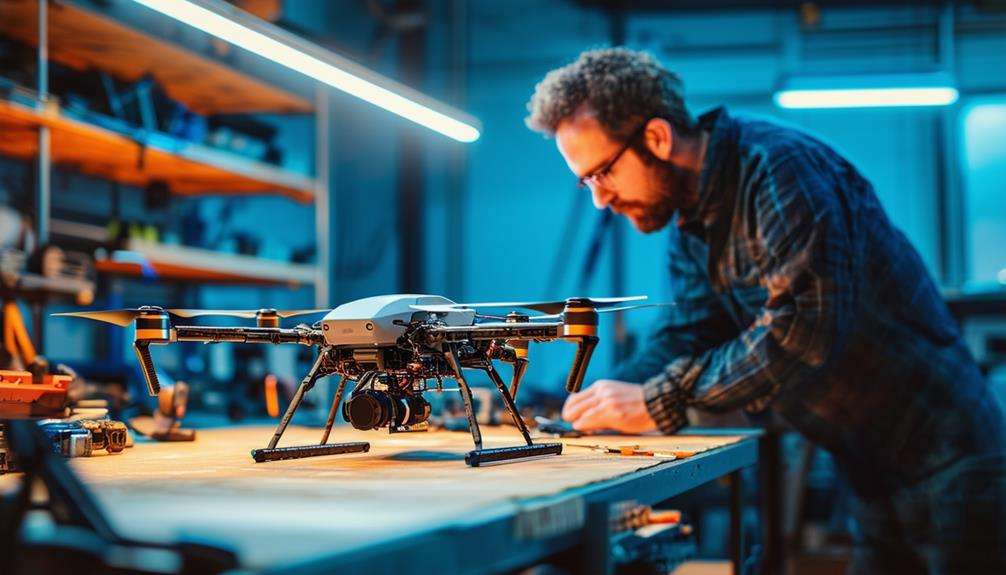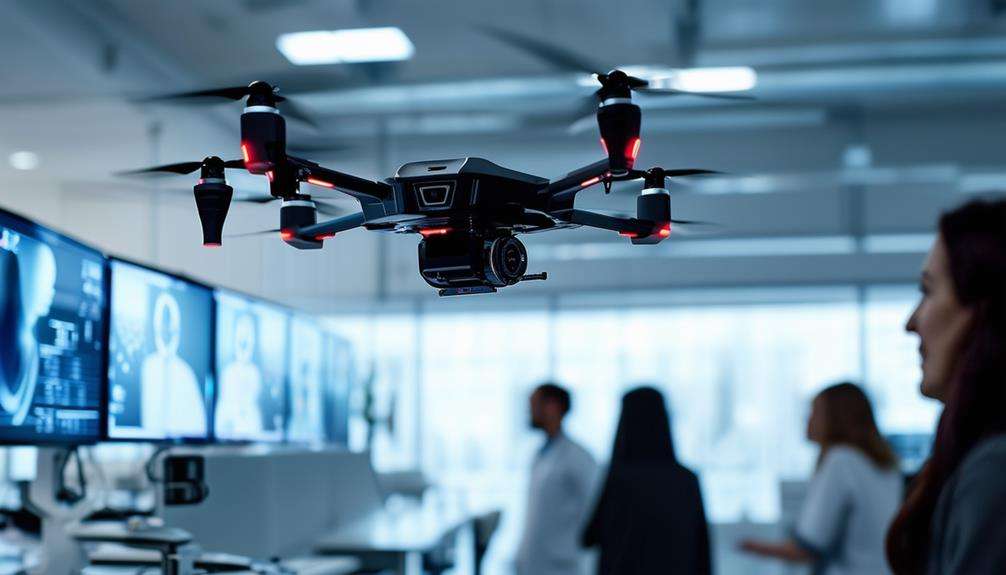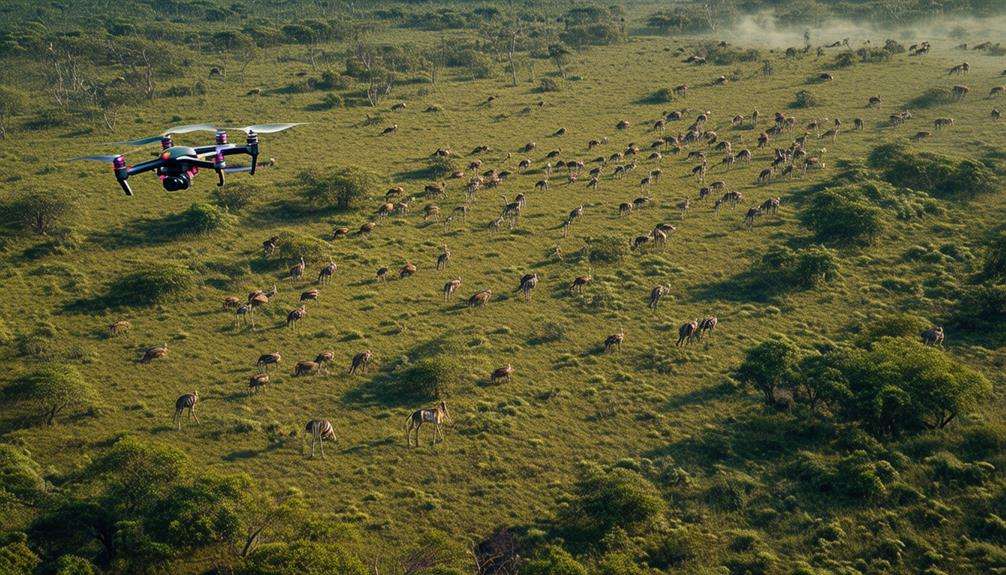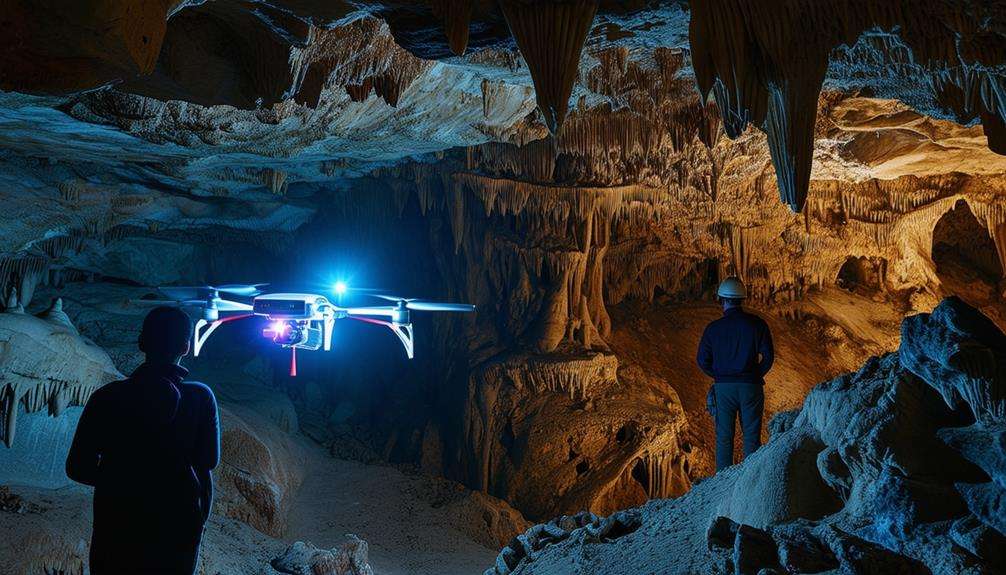What Are Drone Goggles For?
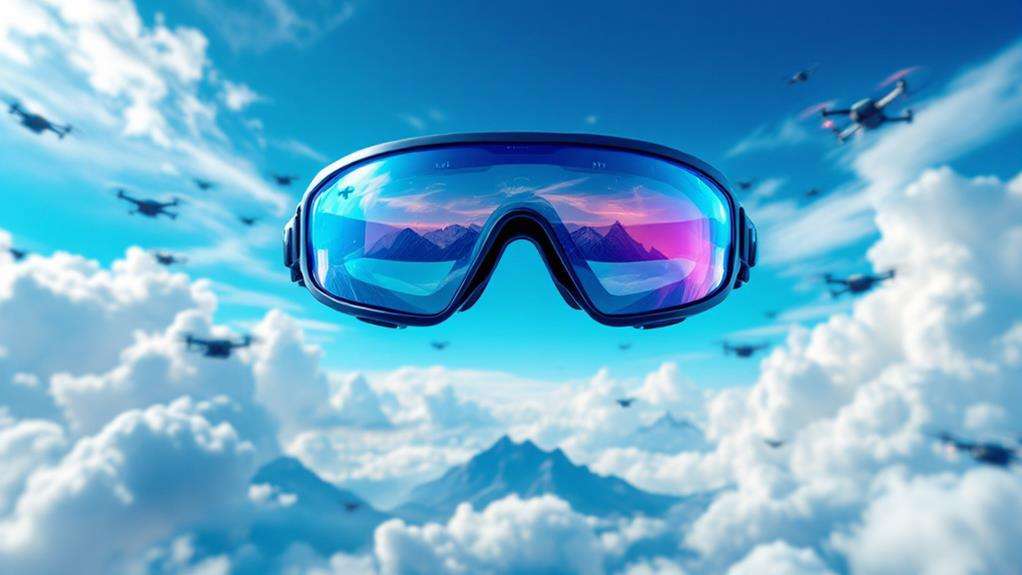
You use drone goggles to experience an immersive first-person view, receiving a live video feed straight from your drone's camera. This setup makes you feel like you're flying right inside the cockpit. The HD video quality offers sharp images, and the field of view helps you detect obstacles quickly. Comfort features like adjustable straps ensure you can focus on flying longer. Whether you're into racing, photographing landscapes, or involved in industrial tasks, these goggles improve precision and control. With various models and features available, there's a lot more to discover about how they can enhance your drone adventures.
Key Takeaways
- Drone goggles provide an immersive first-person view by delivering a live video feed from the drone's camera.
- They enhance drone racing by offering real-time feedback and improved obstacle detection.
- Goggles aid aerial photography by allowing precise control and monitoring of the drone's camera.
- They are used in industrial inspections for detailed assessments without physical presence.
- Search and rescue operations benefit from goggles for navigating difficult environments safely.
Immersive Drone Experience
FPV goggles revolutionize the pilot's experience by delivering a direct, live video feed from the drone's camera right to your eyes. They give you an immersive view, placing you in the drone's cockpit and offering a thrilling, first-person flight perspective. With these goggles, you're not just watching your drone from afar; you're experiencing the flight as if you're onboard. Their wide field of view, ranging from 25 to 80 degrees, enhances this sensation. A broader field of view can make flying feel more realistic, though you'll need to move your eyes more to catch everything at the edges. The enhanced situational awareness provided by this immersive experience allows pilots to navigate complex terrains and avoid obstacles more effectively. The quality of the video is crucial, and FPV goggles often feature HD video capabilities with high-resolution displays, typically starting at 640x480 pixels. This ensures that the images are sharp and detailed, making for a more enjoyable flight. Dual receivers in some models further improve your experience by enhancing signal reception, providing a smoother video feed. Comfort also plays a key role, as adjustable straps and cushioning allow you to wear the goggles for extended periods without discomfort. FPV goggles, with their immersive view and HD video, truly transform how you experience drone flying.
How FPV Goggles Work
Understanding how these goggles deliver such an immersive experience starts with the technology that powers them. FPV goggles work by receiving a live FPV video feed transmitted wirelessly from your drone's camera. This process is similar to how television signals are broadcasted, allowing you to see exactly what your drone sees as it soars through the sky. The video captured by the drone streams in real-time to your goggles, offering you an exciting first-person view. To enhance this immersive experience, some drones utilize computer vision and object detection algorithms, which improve navigation and obstacle avoidance capabilities during your flights. Most FPV goggles come with integrated video receivers, making it easy for you to connect and start flying. Some models also allow for external module connections, giving you the flexibility to enhance functionality if needed. The video feed quality largely depends on the resolution of your goggles. Higher resolutions provide clearer images, with a minimum of 640x480 pixels recommended for a decent viewing experience.
Inside the goggles, tiny LCD screens display the FPV video, bringing the drone's perspective to life. You can adjust the interpupillary distance (IPD) settings on the goggles to align the lenses properly, reducing visual strain and ensuring comfort. This meticulous design allows you to fully enjoy the immersive experience that FPV flying offers.
Key Features Explained
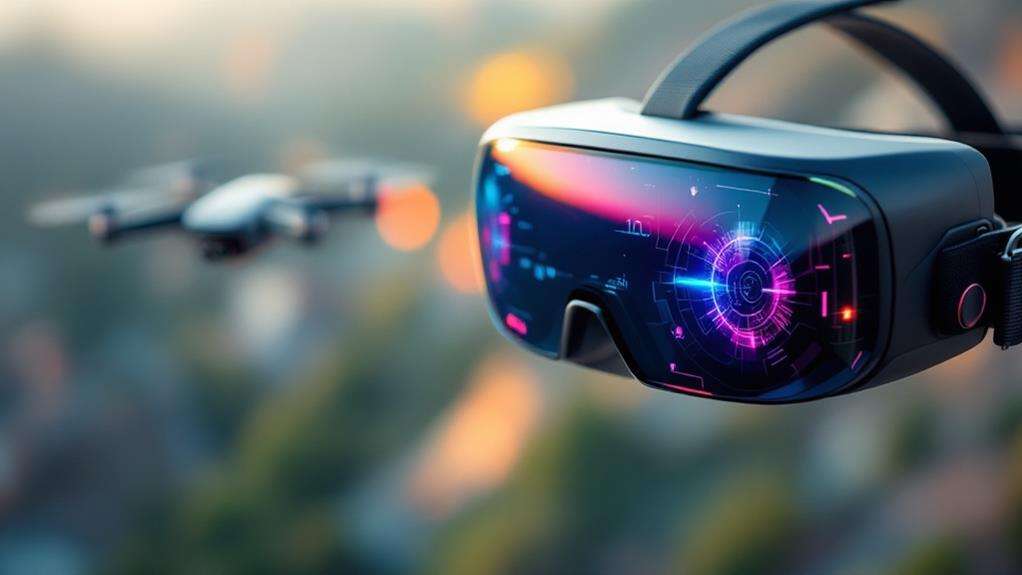
When exploring the key features of drone goggles, it's essential to focus on what truly enhances your flying experience. The FPV experience is all about immersion, and with high-quality LCD panels, you're treated to clear and vivid images that make you feel like you're soaring through the skies. These panels deliver the live video signal from your drone, ensuring you never miss a moment of the action. Adjustable interpupillary distance (IPD) allows you to align the lenses perfectly, tailoring the view to your eyes for maximum clarity and comfort.
A field of view (FOV) ranging from 25 to 80 degrees enhances the immersion, making you feel as if you're inside the cockpit. Integrated video receivers provide seamless connectivity, while external module options allow for compatibility with various drone systems. Head tracking is another feature to look out for, as it lets you control the camera angle just by moving your head, offering a more intuitive flying experience.
Additional functionalities like HDMI input for high-definition connections, DVR for capturing your flights, and audio output for headphone use further enhance your experience, making these goggles not just a tool, but a gateway to thrilling adventures.
Form Factor Varieties
After exploring the key features that elevate your drone goggle experience, let's focus on the various form factors that cater to different user needs. Low Profile Goggles are perfect if you're looking for a lightweight, portable option. They come with small LCD screens for each eye and offer great comfort. However, you might need to adjust them to fit your face shape just right. Then there are Box Goggles, which include an enclosed LCD screen and magnification lenses. These goggles are generally more affordable, making them ideal for beginners or if you wear glasses.
For those who prioritize situational awareness, an FPV Monitor offers a different approach. It's a screen with a built-in FPV receiver, excellent for aerial photography pilots who need to keep an eye on their surroundings without the constraints of traditional goggles. When it comes to Size Variations, FPV goggles have you covered. You'll find options ranging from compact to larger models. Larger goggles often provide a more immersive experience, perfect for extended flying sessions. Don't forget comfort features like adjustable straps and cushioning, which ensure you can enjoy flying without discomfort, no matter the form factor you choose.
Understanding Resolution
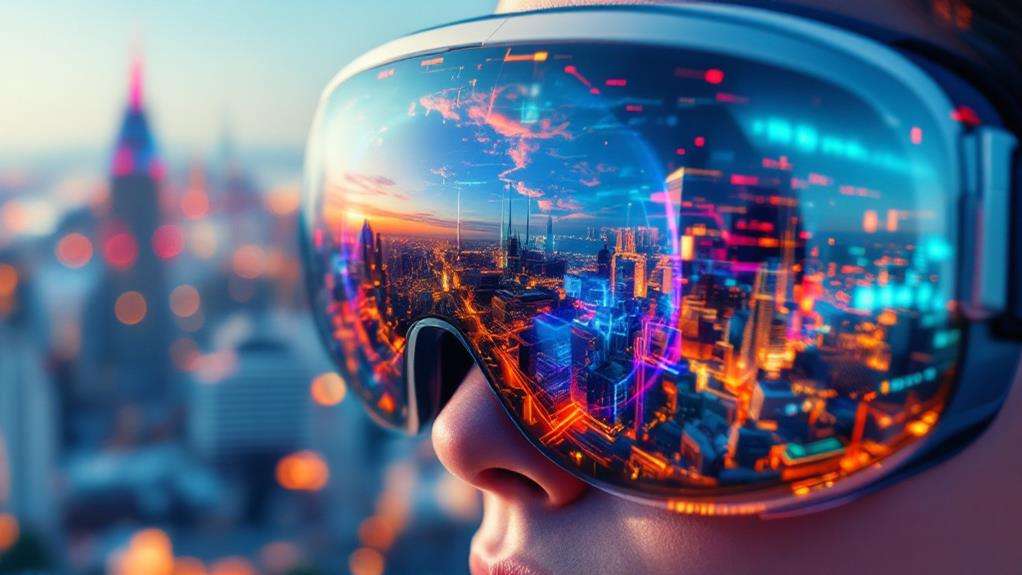
Resolution plays a crucial role in defining the clarity of images you see through your drone goggles. It's essential for ensuring an immersive flying experience. In FPV systems, the resolution directly impacts how well you can navigate and control the drone. A higher resolution allows you to see more details in your surroundings, making it easier to avoid obstacles and enjoy the flight.
When you're choosing FPV goggles, consider the resolution as a key factor. Here's a quick guide:
| Resolution | Clarity Level | Recommended Use |
|---|---|---|
| 320x240 | Low | Budget-friendly options |
| 640x480 | Moderate | Minimum for quality FPV |
| 720p | High | Emerging higher standards |
| Above 720p | Very High | Future-proofing visuals |
| Customizable | Variable | Advanced FPV systems |
Most affordable models start at 320x240, but for a truly immersive experience, you want at least 640x480. Although resolutions above 720p aren't mainstream yet, they indicate the market's trend toward higher resolution. Prioritizing resolution not only enhances your flying fun but also boosts your performance by providing clearer, detailed imagery. It's not just about seeing—it's about experiencing.
Field of View Insights
Understanding the field of view (FOV) in your FPV goggles is crucial for an immersive flying experience. With FOV ranging from 25 to 80 degrees, you'll find that a larger FOV can make you feel like you're truly inside the cockpit. This immersion is what many drone enthusiasts crave, especially when capturing breathtaking vistas. However, it's not just about size; a wider FOV requires more eye movement, which can be tiring.
For racing pilots, FOV is even more critical. They often opt for around 40 degrees, which strikes a good balance between immersion and quick obstacle detection. With high-speed maneuvers, you need to spot obstacles fast, so a narrower FOV helps maintain focus and situational awareness without overwhelming your senses.
Choosing the right FOV also impacts comfort. If the FOV is too wide, it might cause eye strain if not tailored to your preferences. While cinematic pilots might favor a broader perspective for capturing wide scenes, racing pilots prioritize a FOV that keeps their eyes on the track. Remember, the right FOV in your FPV goggles can significantly enhance or detract from your flying experience.
Price and Investment
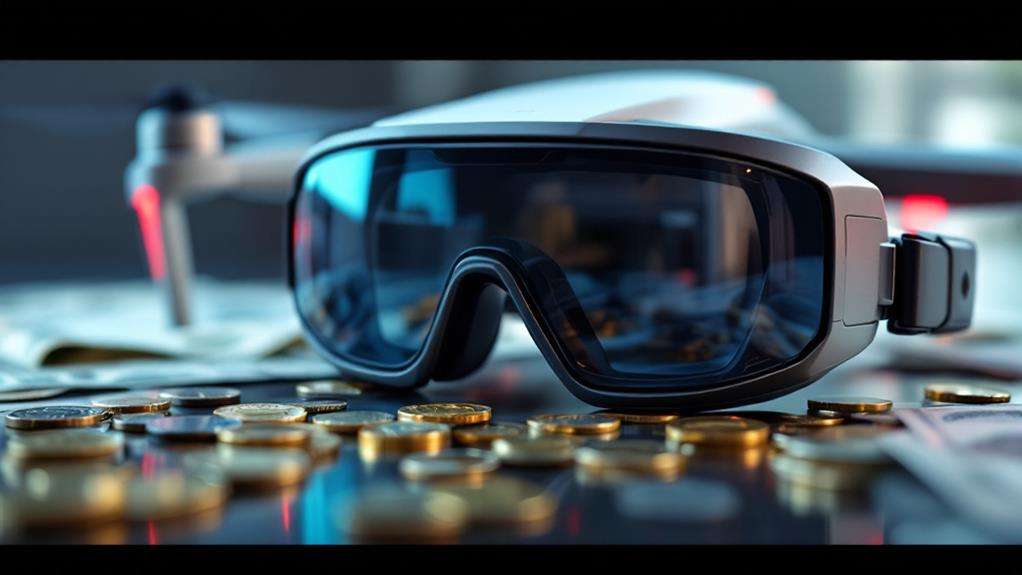
Many drone enthusiasts find themselves pondering the price and investment involved in purchasing FPV goggles. With prices ranging from $30 to over $500, there's a model for every budget. Entry-level FPV goggles, typically under $200, come with basic features that suit beginners. These are a good starting point if you're dipping your toes into the world of drone flying. However, mid-range options, priced between $200 and $500, offer a better investment with enhanced display technology and features like head tracking.
Consider the following breakdown:
| Price Range | Features |
|---|---|
| Under $200 | Basic functionality, suitable for beginners. |
| $200 - $500 | Improved displays, head tracking, better investment for enthusiasts. |
| Over $500 | OLED displays, extensive FOV, superior tech, ideal for serious users. |
| Accessories | Enhance functionality, prices vary with added tech and features. |
| Investment Value | Quality goggles outlast drones, offering long-term performance benefits. |
High-end FPV goggles, above $500, are packed with advanced features like OLED displays and superior receiver technology. Investing in quality FPV goggles makes sense as they often outlast the drones themselves, offering long-term performance and value. Don't overlook accessories, as they can boost functionality and enrich your flying experience.
Use Cases and Applications
How do FPV goggles elevate your drone experience beyond mere flight? They open up a world of exciting possibilities by providing a live video feed that immerses you in the drone's journey. Imagine being in the cockpit as you navigate through drone racing courses. With FPV goggles, you can swiftly react to obstacles and sharp turns, giving you the competitive edge you need to excel in races.
In the realm of aerial photography, these goggles transform your perspective. By allowing you to see what the drone sees in real-time, you can execute complex maneuvers and capture dynamic shots that would've been impossible to orchestrate blindly. Whether you're a filmmaker or a hobbyist, FPV goggles bring your creative vision to life.
Beyond entertainment and art, FPV goggles have serious applications. In industrial inspection, they enable you to perform detailed visual assessments of inaccessible areas safely and efficiently. Search and rescue operations also benefit, as goggles help operators expertly maneuver drones to locate missing persons in challenging environments. Even wildlife researchers use them to observe ecosystems without disturbing the natural habitat. FPV goggles truly revolutionize how you interact with the world from above.
Future Trends and Innovations
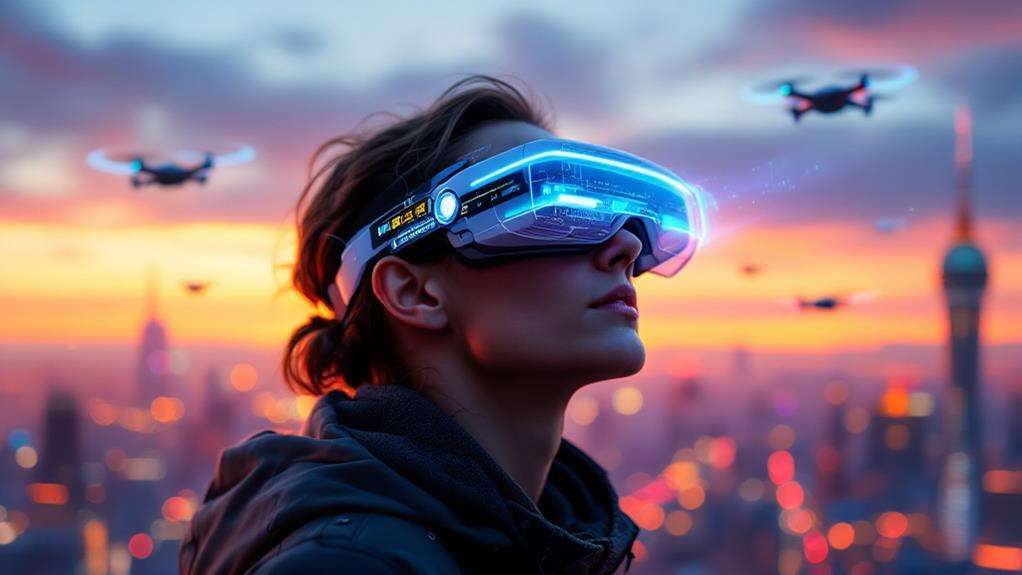
As we look to the future, FPV goggles are set to revolutionize the way you interact with drones. With the integration of augmented reality (AR) overlays, you'll gain access to real-time flight data directly in your video stream. This enhancement will significantly boost your situational awareness, allowing for more precise and informed piloting. Imagine seeing speed, altitude, and battery life superimposed on your view, all without needing to glance away from your drone's perspective.
In the coming years, advancements in display technology promise higher resolutions and refresh rates for your goggles. This means a clearer, more immersive FPV experience, where every detail is sharp and fluid. Enhanced wireless connectivity will further transform your drone adventures by improving signal reliability and range. You can expect a more seamless connection, reducing interruptions and expanding your operational environments.
Customization options will also expand, enabling you to tailor your goggles to your specific needs. Whether you're racing, filming cinematic shots, or exploring agricultural applications, you'll have the flexibility to optimize your setup. As FPV technology ventures into new sectors like infrastructure, expect specialized features to emerge, driving innovation and broadening drone usage horizons.

